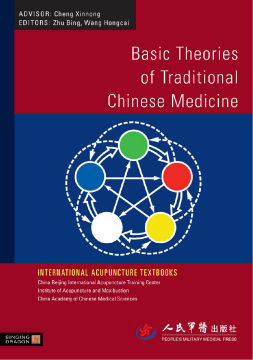
Additional Information
Book Details
Abstract
Traditional Chinese medicine has a long and complex history, yet the basic principles at the heart of practice have remained the same for hundreds of years. Without a solid understanding of these fundamental theories, effective practice is impossible, and this book provides a complete introduction to everything that students and practitioners, both new and experienced, need to know.
The book describes and explains all of the fundamental principles of Traditional Chinese Medicine, including yin/yang, the five elements, the 'zang and fu' organs, Zang Xiang, Qi, and the meridians and collaterals of the body. Explaining not only the principles upon which these elements work, but also how they interrelate, the book describes how they can be used in practice to identify, treat and prevent ill-health and disease.
This thorough and accessible textbook, compiled by the China Beijing International Acupuncture Training Center (CBIATC), under the editorial directorship of leading Chinese clinicians Zhu Bing and Wang Hongcai, is essential reading for students of traditional Chinese medicine, and is also a useful basic reference for TCM practitioners.
the simple descriptions of these ideas are very helpful to a novice and would underpin a much more advanced study of TCM syndromes.
The JAACP (The Journal of the Acupuncture Association of Chartered Physiotherapists)
Although the lucidity of this textbook would have been even more leveraged in the first few years of my OM studies, I find its clarity of context heady refreshment as I am approaching the end of my third decade of practice.
Frank Yurasek Ph. D (China), MSOM, MA, LAc, Oriental Medicine Journal
Combining practical instruction with detailed theory, this authoritative textbook, complied by the China Beijing International Acupuncture Training Center (CBIATC), under the editorial direction of leading Chinese clinicians Zhu Bing and Wang Hongcai, is an excellent reference for students and practitioners at all levels... Although modest in size, these texts are packed with information... in terms of portability and cost... they make themselves serious contenders for the college bags of students of Chinese medicine... In terms of visual presentation, other than the obligatory yin-yang and five-phase diagrams, assistance is limited to a few flow diagrams, which may disappoint more visually-orientated learners. This drawback is largely compensated for by the consistent use of clear tables that facilitate both learning and quick reference. Despite the drawback of the simplification inherent in such texts, some of the chapters are excellent. The chapter on emotions and elements in Basic Theories, for example, is particularly good, as is the chapter on bianzheng in the Diagnostic volume. The chapters on pulse and tongue are also well-written, and designed for quick navigation to allow mere seconds to access, for example, the description and significance of a tense pulse or a grey tongue coating. As such... These texts offer simple, portable, concise and well-structured information that is consistent with the TCM literature already available. On occasion, refreshingly original insights come from the teaching experience of the authors. Whilst this series does not necessarily offer an educational panacea, it may just offer what is missing on the market - an affordable, accurate and accessible series of texts written specifically for a Western mindset and understanding. If the rest of this series of text books are as good as the two reviewed here (Diagnostic of Chinese Medicine and Basic Theories of Chinese Medicine), Singing Dragon Textbooks will definitely become part of the recommended reading of Chinese medicine courses; student in the early stages of their TCM studies o those that require a fresh angle or portable material for revision should certainly consider buying them.
Journal of Chinese Medicine, Greg Meier
Although the lucidity of this textbook would have been even more leveraged in the first few years of my OM studies, I find its clarity of context heady refreshment as I am approaching the end of my third decade of practice.
OMJ
